Places to Connect Within Ourselves
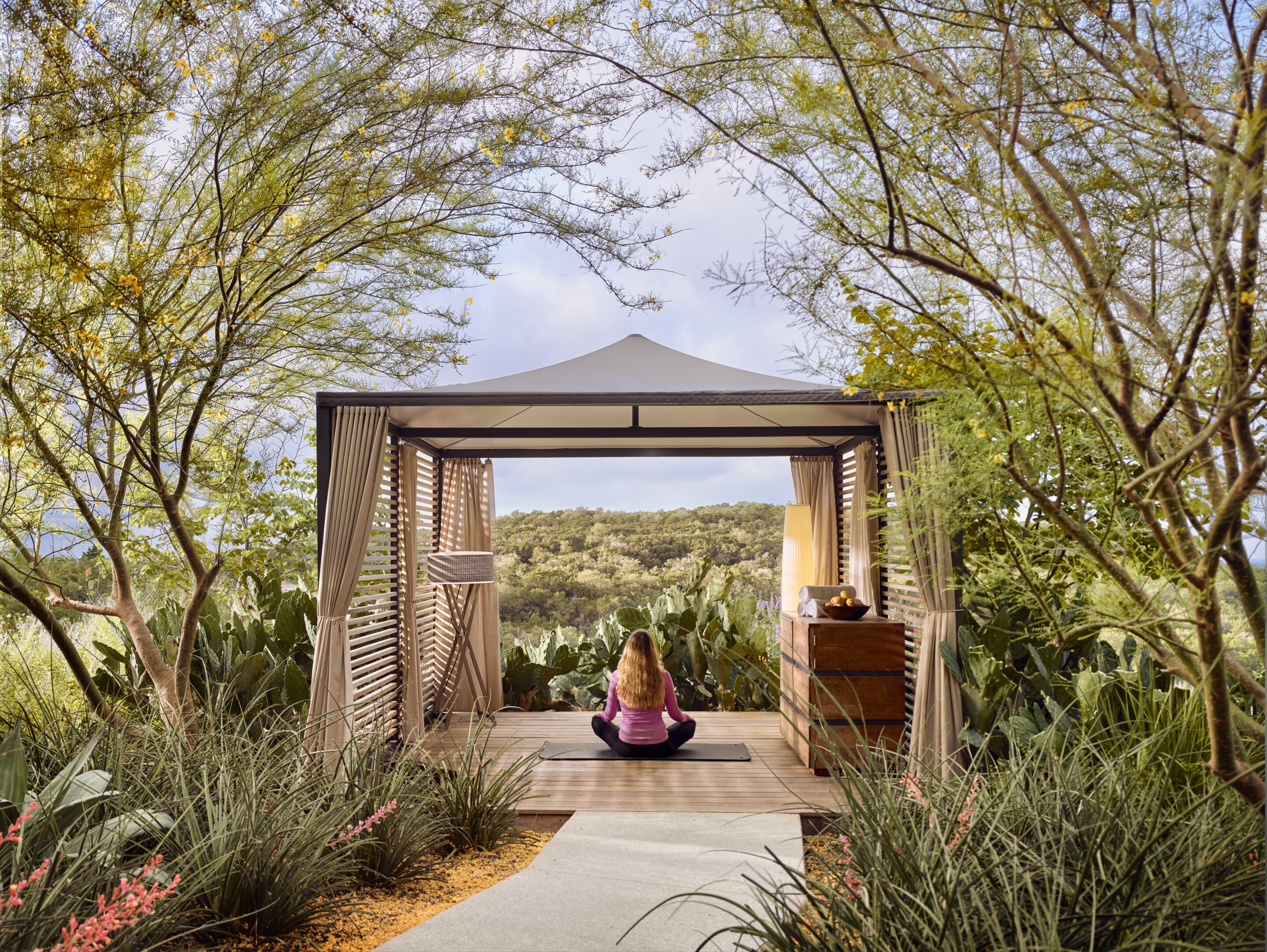 Photograph by Casey Dunn
Photograph by Casey Dunn
“If you are never alone, you cannot know yourself.”
—Paulo Coelho
According to Time Magazine, we are living through “The Great Exhaustion Era.”1 Over the past 50 years, the speed of daily life has increased dramatically—with rapid technological advancement, an obsession with convenience,2 and a pervasive sense that more needs to be done faster. There is a collective exhaustion, something akin to burnout, not from work per se but from the pace of life overall.3
Over the last five years, HKS has partnered with the Center for Brain Health to explore the role the built environment plays in cultivating a brain-healthy future.4 One of the core truths to emerge from this work is how powerful and important rest is, not only in the form of sleep but also in breaks throughout the day.
One way to support rest amid a high-stimulation world is to make space for mindful contemplation and positive solitude. Positive solitude, defined as “the choice of being alone to engage in meaningful inner or physical, spiritual, mental, or cognitive activity/experience,” has been linked to improvements in depression and feelings of loneliness, showing the ways that our connections with ourselves and with others are intertwined.5
How Built Environments Can Support Mindfulness and Solitude
“When in solitude, societal norms and physical surroundings can continue to shape people’s thoughts and feelings.” – Solitude in Context by Thuy-vy Nguyen, Ellen Taylor-Bower, and Katie Yau6
Spaces that encourage positive solitude benefit from design strategies that slow the body and mind. Meandering pathways allow for gradual transitions, inviting exploration and reflection. Soft fascination—watching a stream flow, observing shifting light—restores cognitive reserves and calms the nervous system. Environmental psychologists Rachel and Stephen Kaplan first identified the term soft fascination in their 1980s Attention Restoration Theory to explain effortless attention that is mentally restorative. In contrast, active fascination (like watching TV) competes for our attention, leaving little space for introspection. To fully experience these spaces, we must be intentional—leaving our smartphones behind, stepping away from constant stimulation, and allowing stillness to settle in.7
- Soft fascination (e.g., watching nature) is restorative for your mind and improves your ability to focus.
- Active fascination (e.g., watching TV, phone scrolling) drains focus.
- Designing with living nature (e.g., trees, flowing water) supports soft fascination.
Public Spaces in Which to Be Alone Together
“Spaces that support solitary experiences in the midst of a crowd may encourage a feeling of belonging” – Francesca Specter, New York Times8
Thanksgiving Square in downtown Dallas offers a rare urban sanctuary. Created in the wake of President John F. Kennedy’s assassination, the square was conceived as a place for interfaith peace and quiet contemplation. Visitors enter along a descending path, stepping away from the city’s noise. The gentle sound of water serves as an auditory threshold, muting the chaos beyond. Dappled light filters through tree canopies and an open sky framed by the urban skyline offers a moment of pause. Here, solitude is not loneliness; it is presence, a mindful break within the city’s relentless movement.
- Waterfalls create white noise that offers respite from the noise of the city.
- Grade change shifts the angle of view to see different aspects of nature and calm.
- Movable seating allows control and customization of space.
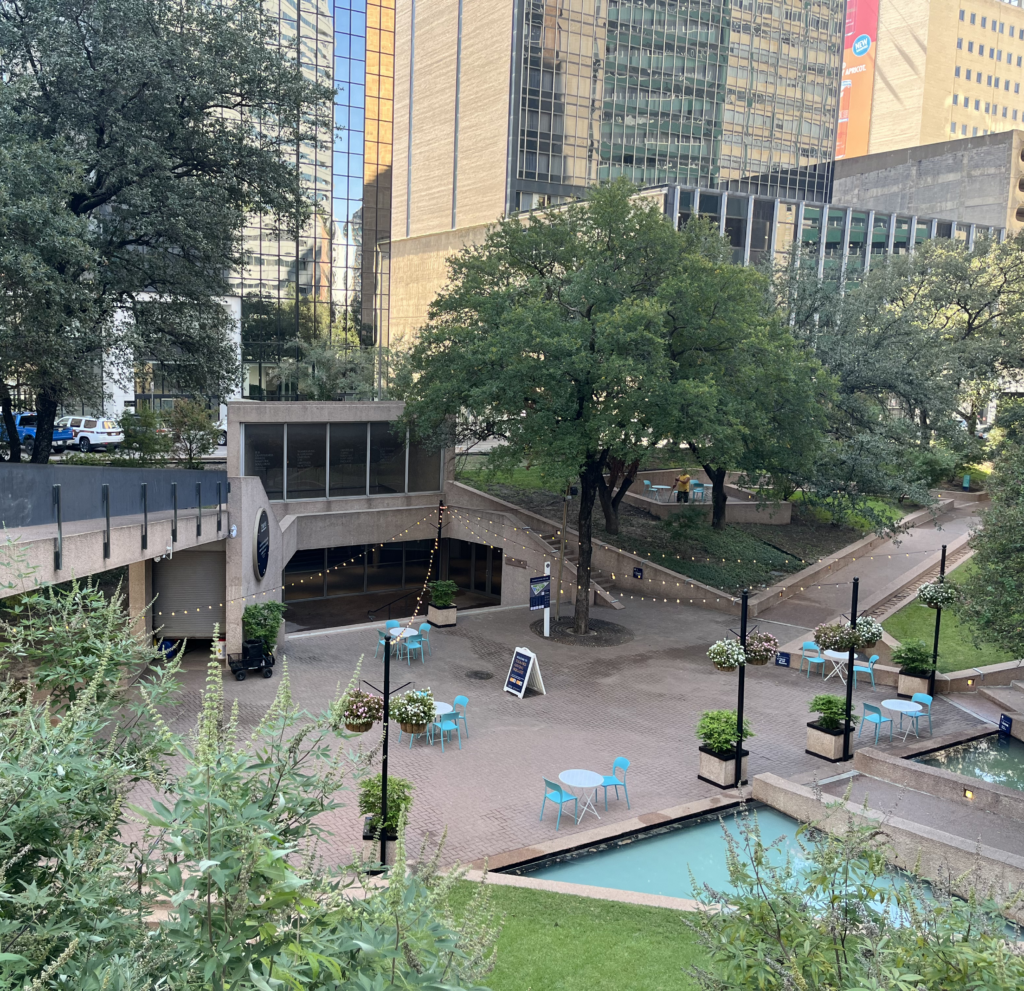
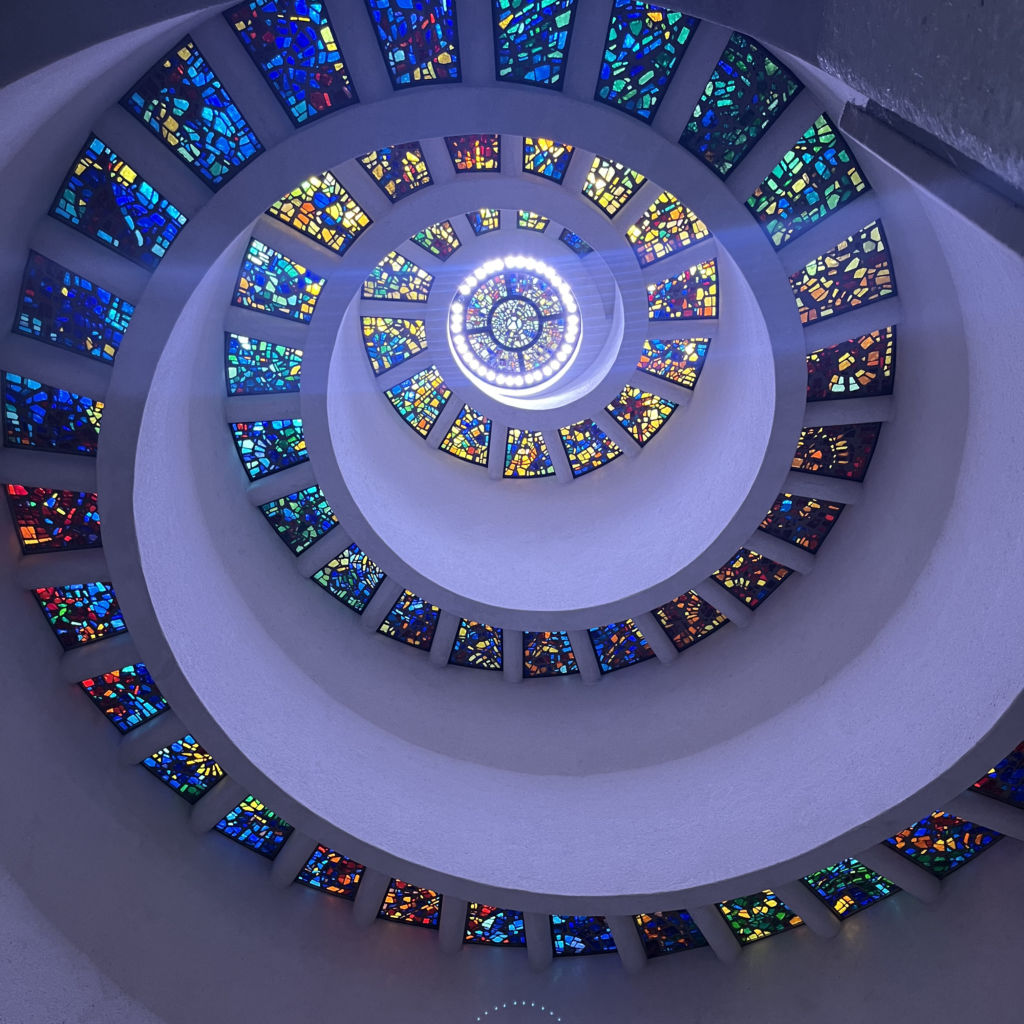
How Moments of Reflection Can Support Clinical Calm
For more than 50 years, Waco Family Medicine’s staff has cared for vulnerable people in the region. When the team of architects, researchers, and planners arrived in 2021, they were met with a wall of heavy exit doors, worn beige surfaces melding into one another, and a barrier of plexiglass with high counters. The space was in stark contrast to the caring compassion Waco Family Medicine represents as an organization.
Patients and staff alike spoke of a need for pause—a place to absorb, process, and reflect amidst the clinical busyness. Many patients and staff we spoke to longed for a glimpse of the outdoors, recalling how the small glass-block skylights of the previous building had once provided a cherished moment of connection to natural light.
Today, the redesigned clinic offers those moments for reflection and restoration. Nurses take their lunches on balconies looking out on an open sky, finding solace in the quiet view. In the clinic’s waiting areas, high-backed yellow chairs arc toward a green space beyond, creating semi-enclosed refuges where waiting becomes an act of quiet contemplation. Here, moments of solitude are not imposed; they emerge naturally, woven into the fabric of daily routines.
- Smaller nooks create opportunities for quiet contemplation.
- Balconies have views of nature and the skyline that support soft fascination.
- Furniture choices support being able to see out and feeling protected (e.g., prospect and refuge)
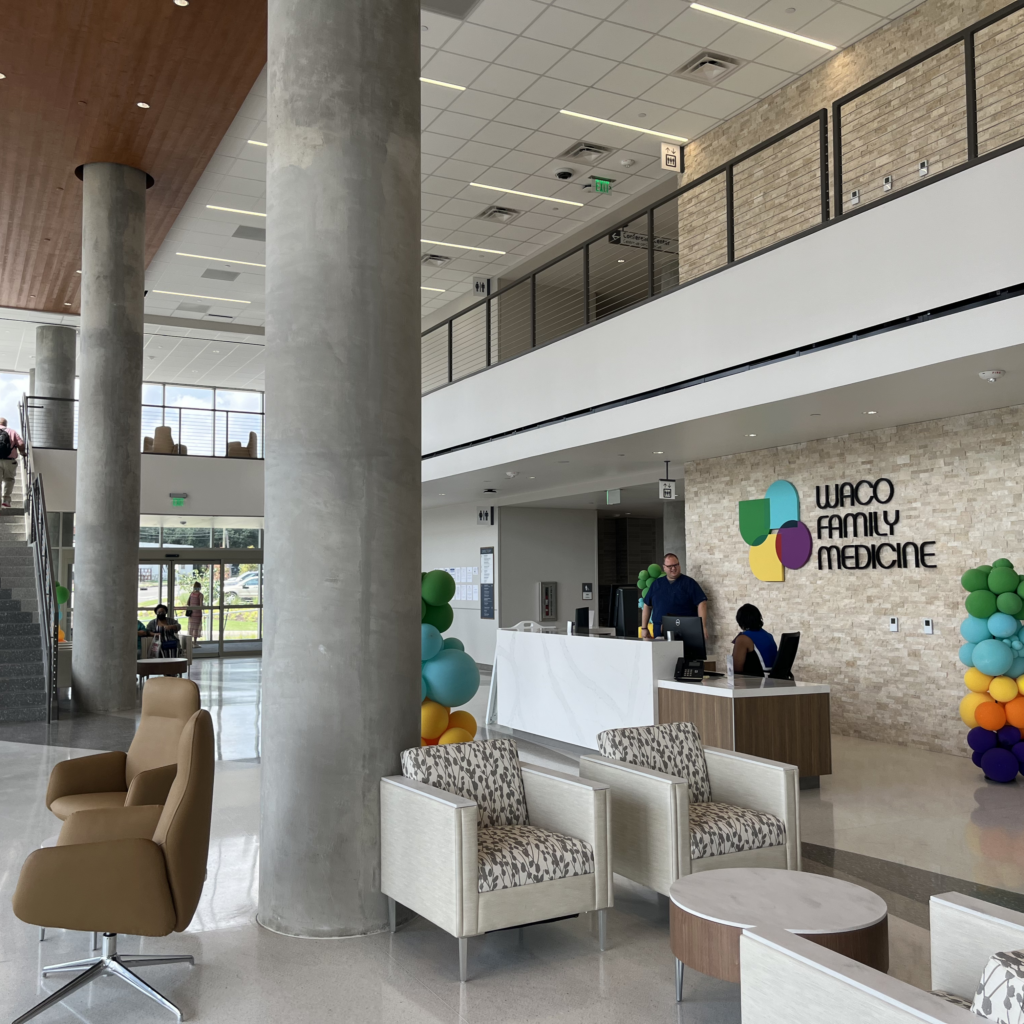
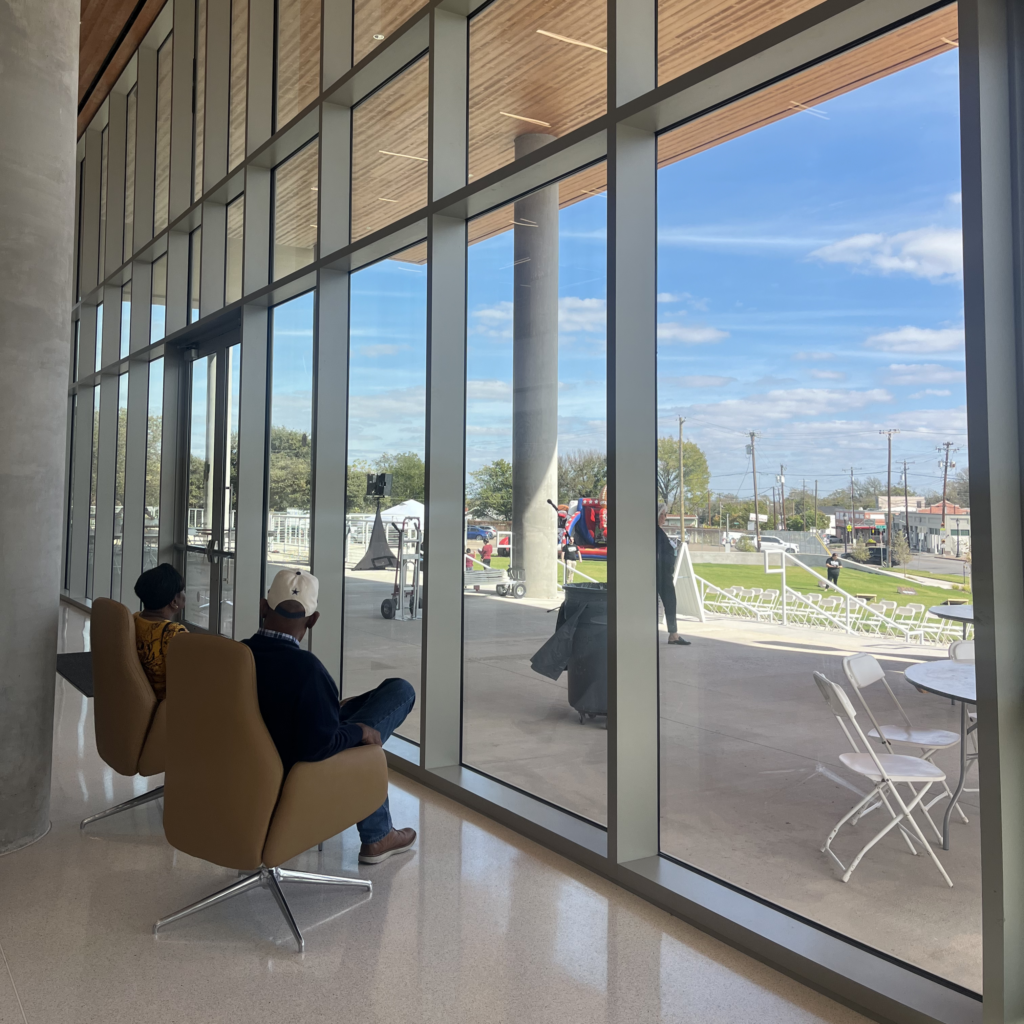
Embedded Nature Fosters Nourishing Hospitality
Since ancient times, people have sought healing in water, light, and solitude. Retreat centers, spas, and wellness spaces serve as modern sanctuaries where one can reconnect with the self. At Loma de Vida Spa & Wellness at La Cantera Resort outside of San Antonio, TX, deliberate design choices guide visitors into a new state of mind.
A winding path leads through the landscape, revealing moments of quiet discovery. Footsteps crunch on the gravel; birds call in the distance; the sound of flowing water rises and falls. With each step, the external journey mirrors an internal one—curiosity, awareness, and anticipation. Here, solitude is not emptiness but a fullness of experience, a deliberate shedding of distraction.
- Gravel pathways engage the senses—sound, sight, touch—to support being in the present moment.
- Winding paths support a sense of discovery and mirror inter-exploration.
- Sounds of water and birds support soft fascination and engaging the senses.

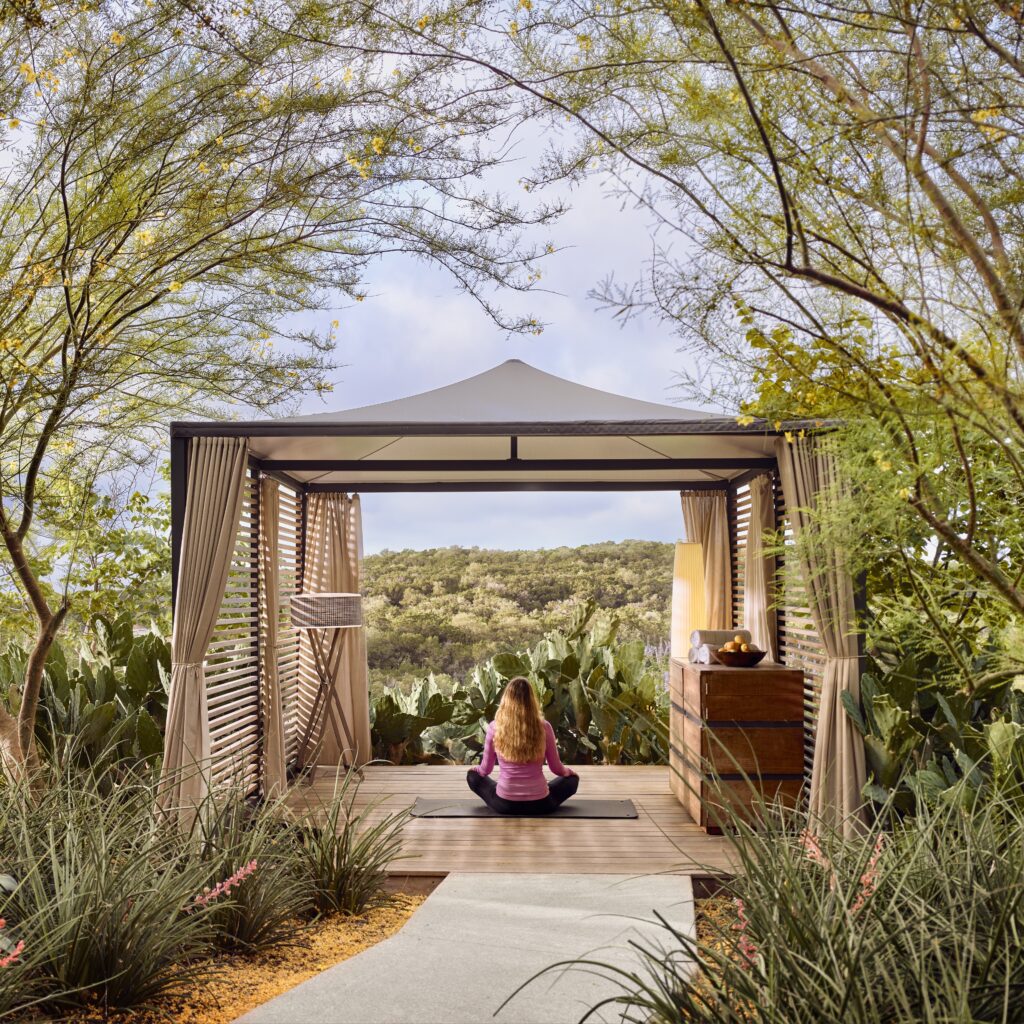
Conclusion
Both authors of this article loved climbing trees as children, watching the world below from a quiet perch. There, we could observe without being observed, feeling at once connected to and separated from the world around us.
That same urge—to sit still, to watch, to contemplate—remains within us long after our tree-climbing days are over. Yet, in the busyness of modern life, such moments can feel frivolous, a luxury we do not have time for. Yet they are anything but.
The year 2025 has been marked by a call for intentionality by many people in our lives. Yet, amidst digital distractions, speeding cars, and the endless sprawl of concrete, it is easy to feel lost, unable to find our internal compass. In these times, moments of positive solitude act as reorientation points—not toward fleeting achievements but toward a deeper, more reflexive growth.
The physical world we build shapes how we think, feel, and behave. The prevailing narrative of busyness has dictated much of our design—spaces filled with technology, optimized for efficiency, designed for movement rather than stillness. But places that invite slowness, that embrace texture, light, and sound to shift us into a state of quiet contemplation, offer something more profound.
These spaces pay dividends—not just in personal well-being but in our ability to connect with others, to serve our communities, and to invest in our mental, physical, and social health.9 In designing for solitude, we are designing for a deeper kind of connection.10
For further readings on this topic, please explore the following:
- Building Brains Coalition focused on design for brain health
- New York Times feature on design for solitude: For Solo Explorers, a Solitude-Friendly ‘Paradise’ Amid the Crowds
- The Solitude Lab: focused on research on the benefits and impacts of solitude
- The Joy of Solitude by psychologist and researcher Robert J. Coplan, PhD
References:
- “Why We’re More Exhausted Than Ever | TIME.” Accessed: Apr. 28, 2025. [Online]. Available: https://time.com/6694092/exhaustion-increasing-causes-essay/ ↩︎
- “Health and social consequences in the quest for comfort, convenience and pleasure,” J. Epidemiol. Community Health, vol. 60, no. 11, p. 922, Nov. 2006. ↩︎
- E. Alpañés, “The Great Exhaustion era: How work consumes our energy and even our free time,” EL PAÍS English. Accessed: Apr. 28, 2025. [Online]. Available: https://english.elpais.com/health/2024-05-28/the-great-exhaustion-era-how-work-consumes-our-energy-and-even-our-free-time.html ↩︎
- Center for BrainHealth, “HKS Partners With Center for BrainHealth to Help Employees Thrive,” HKS Partners With Center for BrainHealth to Help Employees Thrive. Accessed: Apr. 29, 2025. [Online]. Available: https://centerforbrainhealth.org/article/hks-partners-with-center-for-brainhealth-to-help-employees-thrive ↩︎
- S. Ost-Mor et al., “Let there be light: The moderating role of positive solitude in the relationship between loneliness and depressive symptoms,” Int. Psychogeriatr., vol. 36, no. 8, pp. 689–693, Aug. 2024, doi: 10.1017/S1041610223000698. ↩︎
- Nguyen, Thuy-vy T., Ellen Taylor-Bower, and Katie Yau. 2023. “Solitude in Context: A Systematic Review of How Societal Norms and Physical Environment Shape Perceptions of Solitary Experiences.” PsyArXiv. January 8. doi:10.31234/osf.io/xb8gd. ↩︎
- R. Kaplan and S. Kaplan, The experience of nature: A psychological perspective. in The experience of nature: A psychological perspective. New York, NY, US: Cambridge University Press, 1989, pp. xii, 340. ↩︎
- Francesca Specter, “For the Solo Explorer: Airport Lounges, Parks and Other Urban Spaces – The New York Times,” New York Times, Aug. 29, 2024. Accessed: Apr. 29, 2025. [Online]. Available: https://www.nytimes.com/2024/08/29/style/solo-travel-public-spaces.html ↩︎
- “Connecting IRL: How the Built Environment Can Foster Social Health,” HKS Architects. Accessed: Apr. 29, 2025. [Online]. Available: https://www.hksinc.com/how-we-think/reports/connecting-irl-how-the-built-environment-can-foster-social-health/ ↩︎
- “How to Design for Solitude | Psychology Today.” Accessed: Apr. 29, 2025. [Online]. Available: https://www.psychologytoday.com/us/blog/designed-for-happiness/202409/how-to-design-for-solitude ↩︎